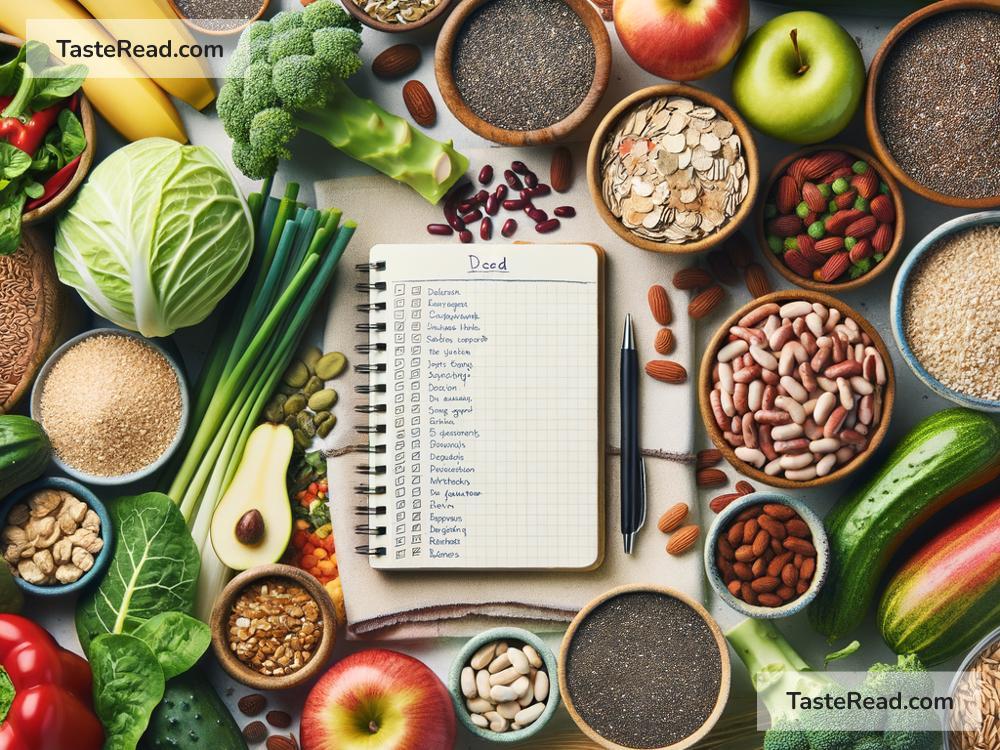How to Incorporate More Fiber Into Your Diet
Are you trying to eat healthier and improve your overall well-being? One easy way to start is by incorporating more fiber into your diet. Fiber is essential for good digestion, heart health, and even weight management. Yet, many people don’t eat enough of it! The good news is that adding fiber to your meals doesn’t have to be complicated. In this blog, you’ll learn simple tips and tricks to increase your fiber intake and enjoy the benefits of this amazing nutrient.
What Is Fiber and Why Is It Important?
Fiber is a type of carbohydrate found in plant-based foods like fruits, vegetables, grains, nuts, and seeds. Unlike other carbs, fiber isn’t digested by your body. Instead, it helps move food through your digestive system, keeping things running smoothly. There are two types of fiber:
- Soluble fiber, which dissolves in water to form a gel-like substance. It helps lower cholesterol and regulates blood sugar levels.
- Insoluble fiber, which doesn’t dissolve in water. It adds bulk to your stool, helping prevent constipation and promoting regular bowel movements.
Eating enough fiber can help you:
– Feel fuller for longer, aiding weight loss.
– Lower your risk for heart disease, type 2 diabetes, and certain cancers.
– Support a healthy gut microbiome, which benefits digestion and immunity.
The recommended daily fiber intake for adults is about 25 grams for women and 38 grams for men. Unfortunately, most people consume far less than this amount.
Easy Ways to Add More Fiber to Your Diet
Now that you know why fiber is so important, how can you incorporate more of it into your meals? Here are simple and practical tips to help you make fiber-rich choices:
1. Start Your Day with a High-Fiber Breakfast
Breakfast is an excellent opportunity to pack in some fiber. Instead of sugary cereals or white toast, consider these options:
– Choose whole-grain cereals or oats topped with fruits like berries or bananas.
– Make a smoothie using high-fiber ingredients like spinach, chia seeds, and apples.
– Replace white bread or bagels with whole-grain versions.
2. Snack Smart
Swap out chips and candy for fiber-filled snacks. Fiber-rich snacks not only help you stay full but also prevent unhealthy cravings. Try these ideas:
– Fresh fruits like apples, oranges, or pears (don’t peel them—fiber is often in the skin!).
– Raw veggies like carrots, broccoli, and celery paired with hummus or guacamole.
– A handful of nuts or seeds, such as almonds or sunflower seeds.
– Popcorn (just skip the butter and salt).
3. Substitute Refined Grains for Whole Grains
Refined grains, like white rice and white bread, have had their fiber stripped away during processing. Switching to whole grains is one of the easiest ways to boost your fiber intake. Here’s how:
– Choose brown rice, quinoa, bulgur, or farro instead of white rice.
– Swap whole-grain bread, tortillas, or crackers for white versions.
– Pick whole-grain pasta or noodles made from lentils or chickpeas instead of regular pasta.
4. Load Up on Vegetables
Vegetables are loaded with fiber, so make them a central part of your meals. Aim to fill half your plate with veggies. Here’s how:
– Add leafy greens like spinach, kale, or arugula to salads, sandwiches, and wraps.
– Include vegetable sides like roasted Brussels sprouts, broccoli, or sweet potatoes.
– Mix grated zucchini, carrots, or cauliflower into soups and sauces.
5. Don’t Forget the Beans and Legumes
Beans, lentils, and peas are superstars when it comes to fiber. Incorporate them into dishes like:
– Soups, stews, or chili.
– Salads or grain bowls.
– Burritos, tacos, or veggie burgers.
You can also blend beans into spreads like hummus or mash them for dips.
6. Choose Fiber-Rich Sweet Treats
Satisfy your sweet tooth while adding fiber to your diet by choosing fruits or desserts made with whole ingredients. For example:
– Opt for fresh fruits like berries, grapes, or melon instead of candy bars.
– Bake with whole-grain flours or oats instead of refined white flour.
– Use fruits like dates or applesauce as natural sweeteners.
7. Use High-Fiber Add-Ons
Boost the fiber content of any meal with sprinkle-worthy ingredients. These include:
– Chia seeds or flaxseeds, which pack an impressive fiber punch. Add them to smoothies, yogurt, or oatmeal.
– Nuts and seeds, which can be sprinkled on salads or stir-fries.
– Shredded coconut, which can be added to baked goods or granola.
A Few Tips for Success
- Increase Fiber Gradually: If you’re not used to eating a lot of fiber, introduce it slowly to avoid bloating or discomfort. Gradual changes will help your body adjust.
- Drink Plenty of Water: Fiber works best when it has enough water to help it move through your digestive system.
- Read Labels: When buying packaged foods, check the nutrition label to find options that contain more fiber.
Final Thoughts
Eating enough fiber doesn’t have to be hard or boring. It’s all about making smarter choices and swapping out low-fiber foods for more nutrient-dense options. With simple changes like eating whole grains, snacking on fruits and veggies, and adding nuts and seeds to your meals, you’ll feel the benefits of fiber in no time. Remember, small steps lead to big changes, so start incorporating more fiber into your diet today!


